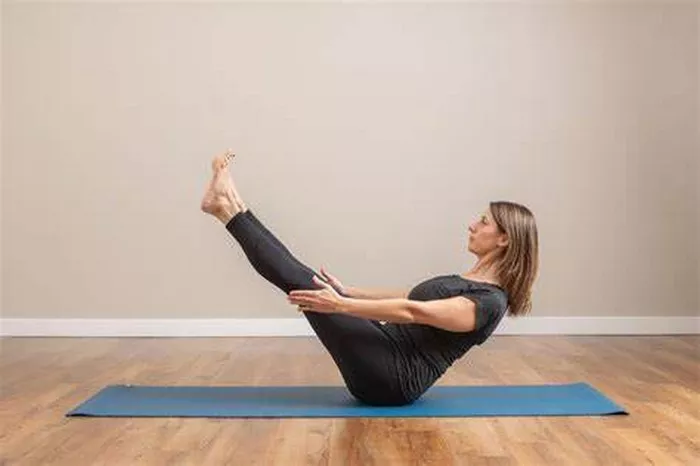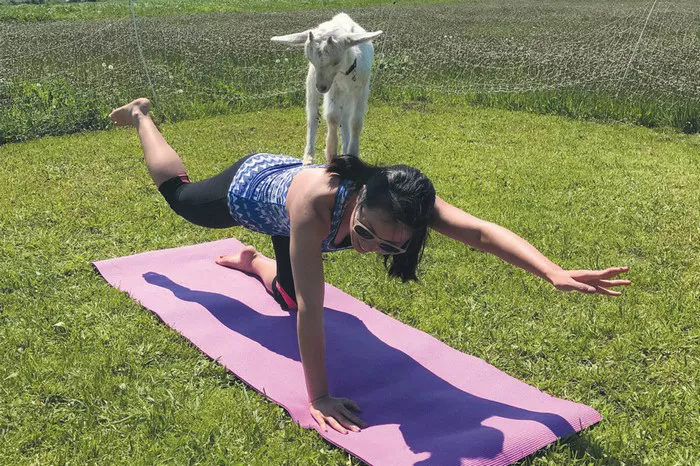Yoga is a holistic practice that helps improve flexibility, strength, and mental well-being. One of the common goals for many yoga practitioners is achieving a toned, flat stomach. While yoga cannot promise immediate or drastic results in weight loss, it can be an essential part of a fitness routine that contributes to a flatter belly. Through consistent practice, specific yoga poses can strengthen your core muscles, reduce belly fat, improve posture, and increase overall body awareness.
In this article, we will explore the best yoga poses for a flat stomach, breaking them down into key movements that target the abdominal area. Along with that, we’ll cover the importance of breathwork, mindfulness, and lifestyle habits to support your goal of achieving a flatter belly.
Understanding the Core and Its Role in a Flat Stomach
What is the Core?
Before we dive into the poses, let’s first understand what the core is. The core refers to the muscles in your abdomen, back, and pelvis. These muscles support your spine and help with posture, balance, and stability. A strong core is vital not only for a toned stomach but for overall body strength and function.
The primary muscles that make up the core include:
Rectus abdominis: The “six-pack” muscles that run down the front of your stomach.
Obliques: The muscles on the sides of your abdomen.
Transverse abdominis: The deep core muscles that wrap around your waist like a corset.
Erector spinae: Muscles along your spine that help with posture.
Pelvic floor muscles: Important for supporting the organs in the lower abdomen.
How Does Yoga Help Flatten the Stomach?
Yoga helps target the core in multiple ways. By engaging in yoga poses that focus on strengthening and stretching the muscles of the abdomen, you can reduce belly fat and improve muscle tone. Additionally, yoga also promotes better digestion and posture, which can further contribute to a flatter stomach.
A consistent yoga practice can help in the following ways:
Strengthens the abdominal muscles: Many yoga poses activate the rectus abdominis, obliques, and transverse abdominis muscles.
Boosts metabolism: Certain dynamic movements can stimulate metabolism and encourage fat burning.
Improves posture: Yoga enhances posture, which can make your stomach appear flatter.
Reduces stress: Lower stress levels can lead to reduced cortisol production, which is linked to belly fat.
With these benefits in mind, let’s explore the yoga poses that are particularly effective for flattening the stomach.
Top Yoga Poses for a Flat Stomach
1. Boat Pose (Navasana)
Benefits: Strengthens the abdominal muscles, improves balance, and tones the core.
Boat Pose is one of the most effective poses for engaging the entire core. It targets both the upper and lower abs, as well as the obliques.
How to Do It:
Sit on the floor with your knees bent and feet flat on the ground.
Lean back slightly and lift your feet off the floor so your shins are parallel to the ground.
Slowly extend your legs, keeping them straight while balancing on your sit bones.
Extend your arms forward, parallel to the floor, or place your hands by your sides.
Hold the pose for 20-30 seconds, breathing deeply. Gradually increase the time as you build strength.
Tip: To avoid straining your lower back, engage your abdominal muscles and draw your navel toward your spine.
2. Plank Pose (Phalakasana)
Benefits: Engages the entire core, including the abdominal muscles, shoulders, and back.
Plank Pose is a simple yet powerful pose that strengthens the core, arms, and shoulders. It is an excellent pose to build endurance and stability in the abdominal region.
How to Do It:
Start in a tabletop position with your hands directly under your shoulders and knees under your hips.
Step your feet back one at a time, coming into a straight line from head to heels.
Engage your core, lift your navel toward your spine, and press through your palms.
Keep your body in a straight line, avoiding sagging in the hips or arching in the back.
Hold for 30 seconds to 1 minute, then slowly lower down.
Tip: Keep your shoulders away from your ears and maintain a neutral neck position to avoid strain.
3. Downward-Facing Dog (Adho Mukha Svanasana)
Benefits: Strengthens the core, stretches the hamstrings, and lengthens the spine.
Downward-Facing Dog is an all-encompassing yoga pose that activates the core muscles while providing a full-body stretch. It helps build core strength and encourages proper alignment.
How to Do It:
Start in a tabletop position with your wrists under your shoulders and knees under your hips.
Lift your hips toward the ceiling, keeping your hands and feet firmly planted on the ground.
Straighten your legs, pressing your heels toward the floor.
Engage your core and lengthen your spine as you move your chest toward your thighs.
Hold for 30 seconds to 1 minute, breathing deeply.
Tip: Focus on keeping your core engaged and your back flat. Don’t let your belly sag or arch excessively.
4. Warrior III Pose (Virabhadrasana III)
Benefits: Strengthens the core, legs, and arms; improves balance and posture.
Warrior III is a balancing pose that challenges your core while building strength in your legs and back. It also helps engage the transverse abdominis and obliques.
How to Do It:
Begin in a standing position with your feet hip-width apart.
Step your right foot back and shift your weight onto your left leg.
Hinge forward at the hips, extending your arms in front of you while raising your right leg behind you.
Keep your body in a straight line from head to heel.
Hold for 20-30 seconds, then switch sides.
Tip: Keep your hips level, and avoid letting your lifted leg drop lower than parallel to the ground.
5. Cobra Pose (Bhujangasana)
Benefits: Strengthens the lower back, tones the abdomen, and improves posture.
Cobra Pose is great for stretching and strengthening the entire core, especially the lower back and abdominal muscles.
How to Do It:
Lie face down with your legs extended behind you and your palms placed on the floor under your shoulders.
Press your hands into the floor as you lift your chest and head, using the strength of your back and core muscles.
Keep your elbows slightly bent and avoid collapsing your lower back.
Hold the pose for 20-30 seconds, then gently lower back down.
Tip: Keep your shoulders relaxed and away from your ears as you lift your chest.
6. Bicycle Crunch Pose (Supta Pavanmuktasana Variation)
Benefits: Targets the obliques and rectus abdominis, helps tone the sides and lower belly.
This variation of the traditional bicycle crunch incorporates a yoga element to engage the core more effectively.
How to Do It:
Lie on your back with your knees bent and feet flat on the floor.
Bring your knees towards your chest and interlace your fingers behind your head.
Extend your right leg while twisting your torso to bring your left elbow toward your right knee.
Switch sides by extending your left leg and twisting your torso to bring your right elbow toward your left knee.
Repeat in a slow, controlled motion, engaging your core with each twist.
Tip: Keep your lower back pressed into the floor and avoid pulling on your neck.
7. Dolphin Pose (Ardha Pincha Mayurasana)
Benefits: Strengthens the shoulders, core, and legs while stretching the spine.
Dolphin Pose is a variation of Downward-Facing Dog that places more emphasis on the shoulders and core.
How to Do It:
Start in a tabletop position, with your forearms on the floor and elbows directly under your shoulders.
Lift your hips up and back, coming into an inverted “V” shape.
Press your forearms into the floor and engage your core.
Hold the pose for 30 seconds to 1 minute, breathing steadily.
Tip: Keep your head between your arms and avoid letting it hang or strain your neck.
8. Side Plank Pose (Vasisthasana)
Benefits: Strengthens the core, especially the obliques, and improves stability and balance.
Side Plank is an excellent pose for targeting the sides of your abdomen and increasing overall core strength.
How to Do It:
Start in a regular Plank Pose.
Shift your weight onto your right hand and outer edge of your right foot.
Stack your left foot on top of the right, and extend your left arm toward the ceiling.
Hold for 20-30 seconds, then switch sides.
Tip: Keep your body in a straight line and avoid letting your hips sag. Focus on engaging your side abs.
See Also: What Are the Different Types of Yoga Asanas?
Incorporating Breathwork and Mindfulness
Breathwork plays a significant role in yoga practice and can enhance core engagement. Focused breathing techniques, such as Ujjayi Breath (victorious breath), can help you maintain stability in poses and connect more deeply with your abdominal muscles.
Tips for Breathing:
Inhale and exhale deeply through the nose, keeping your breath steady.
Focus on engaging your abdominal muscles on every exhale.
Use your breath to guide you into deeper stretches and more challenging poses.
Mindfulness during your practice also helps cultivate body awareness, which can lead to more effective activation of the core muscles. Staying present in the moment and focusing on proper alignment will maximize the benefits of each pose.
Additional Tips for Achieving a Flat Stomach
While yoga can certainly help tone the abdominal muscles and promote a flat stomach, it is important to adopt a comprehensive approach that includes:
Healthy Nutrition: A balanced diet rich in whole foods, lean proteins, healthy fats, and fiber helps reduce bloating and support fat loss.
Consistent Practice: Regular yoga practice combined with other forms of exercise (like cardio) can accelerate results.
Hydration: Staying hydrated supports digestion and keeps your body functioning optimally.
Stress Management: Chronic stress can contribute to belly fat, so prioritize relaxation techniques such as meditation, deep breathing, and mindful practices.
Conclusion
Yoga is an excellent way to work towards a flatter stomach, not just by toning the core but by fostering overall physical and mental well-being. By incorporating poses like Boat Pose, Plank, and Downward-Facing Dog into your practice, along with maintaining mindful breathing and a healthy lifestyle, you’ll notice improvements in both your abdominal strength and your overall posture.
Remember, consistency is key. Stick with your practice, and over time, you will see positive changes in your body and health.
You Might Be Interested In























